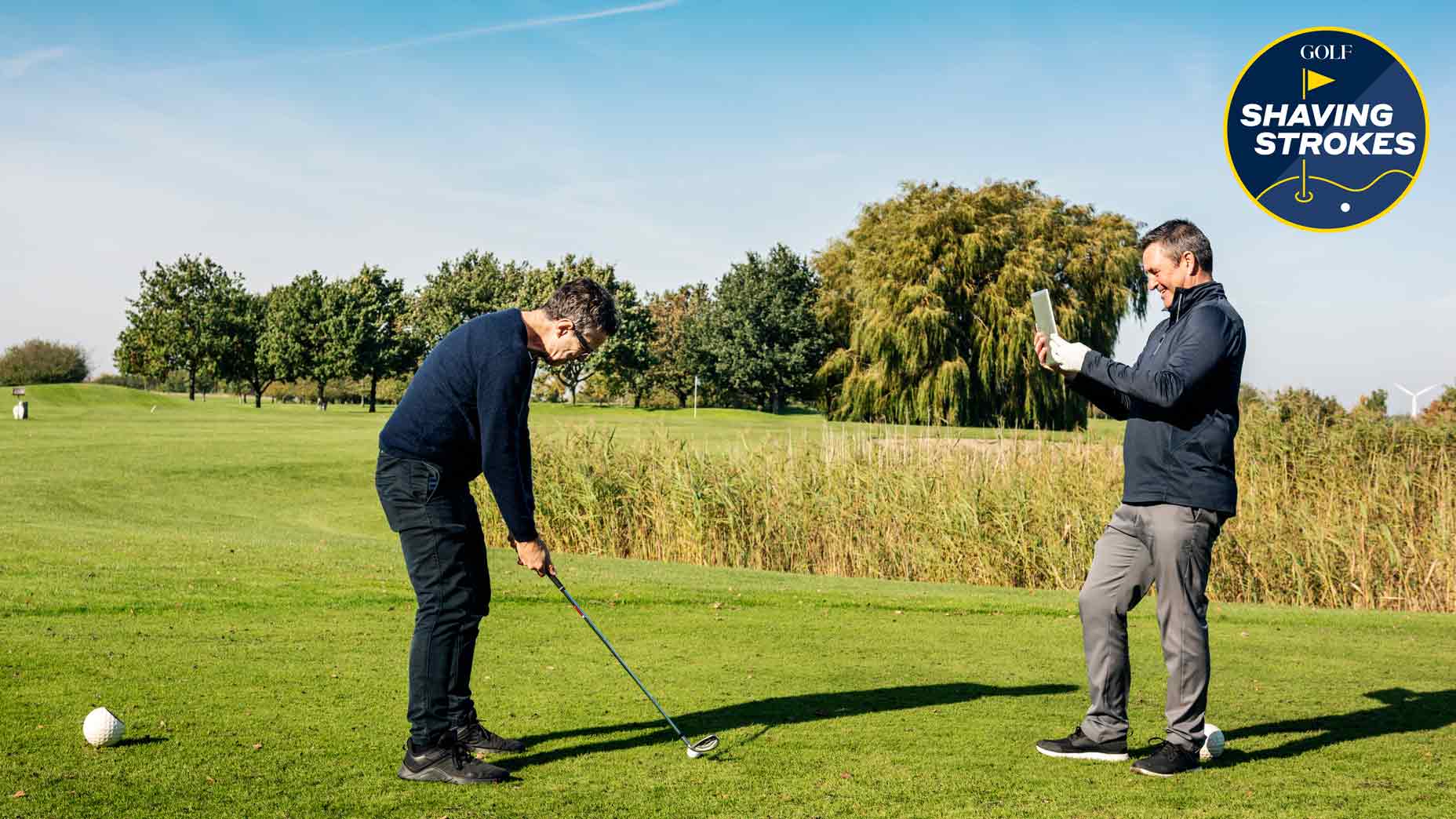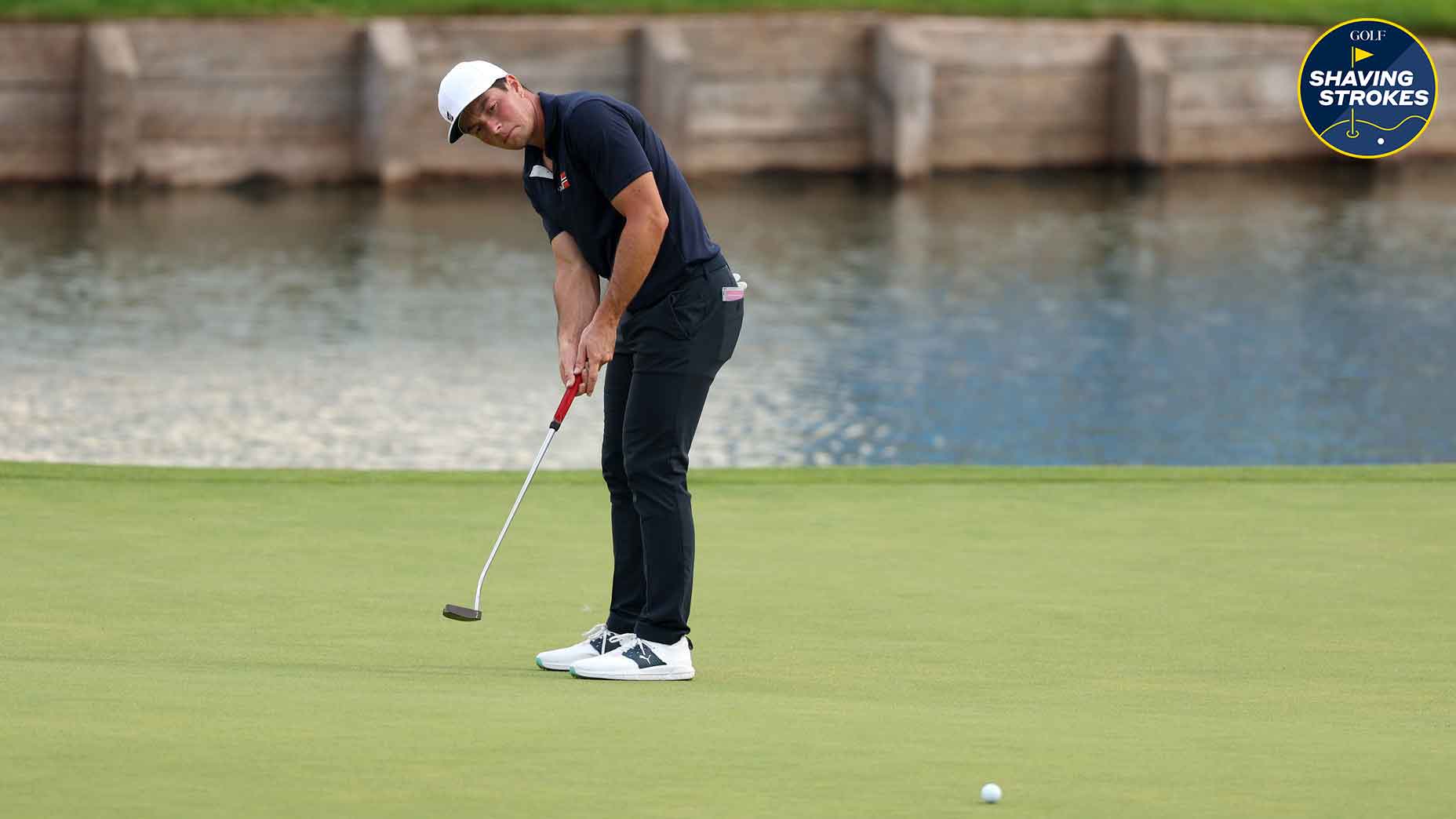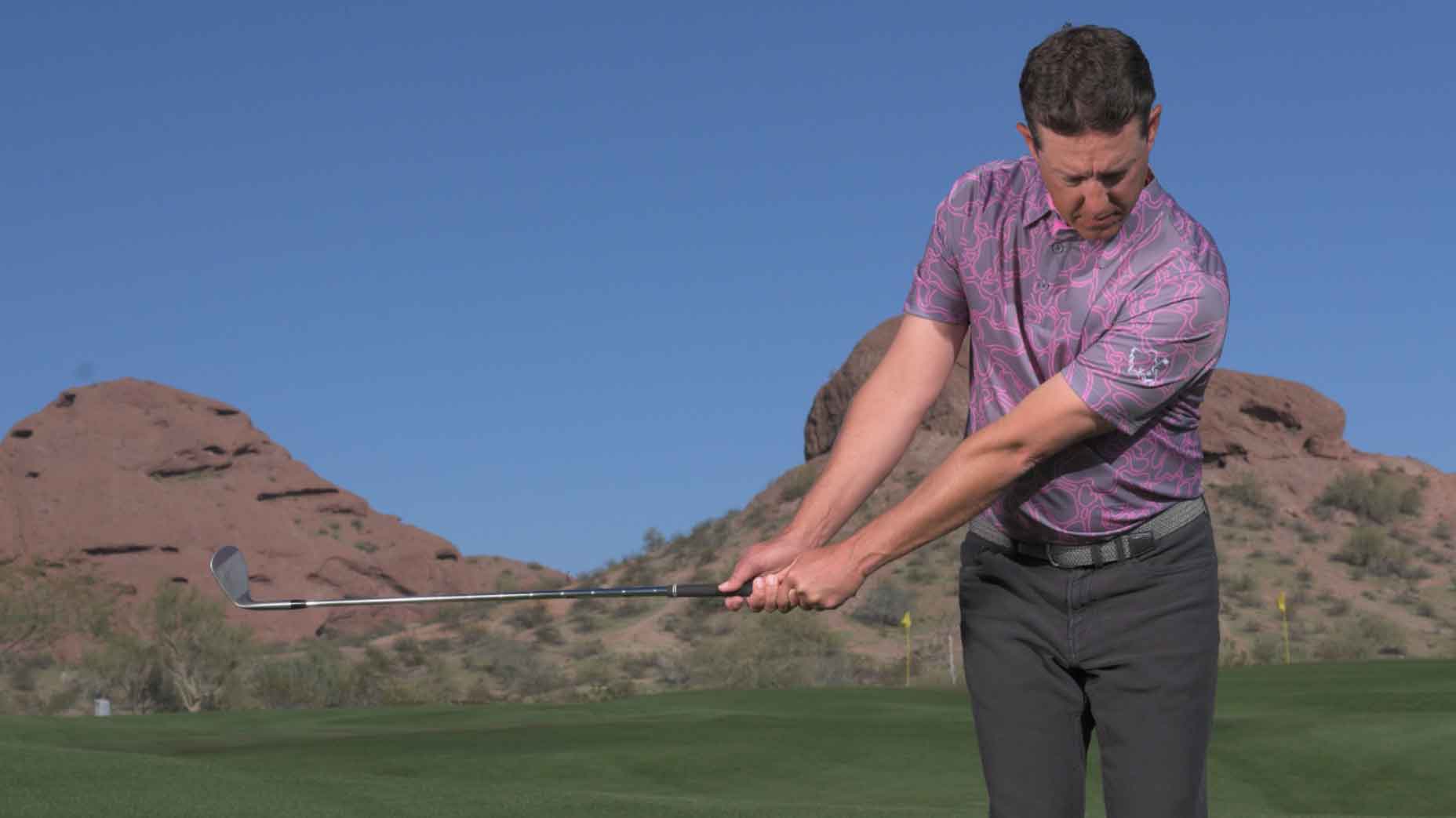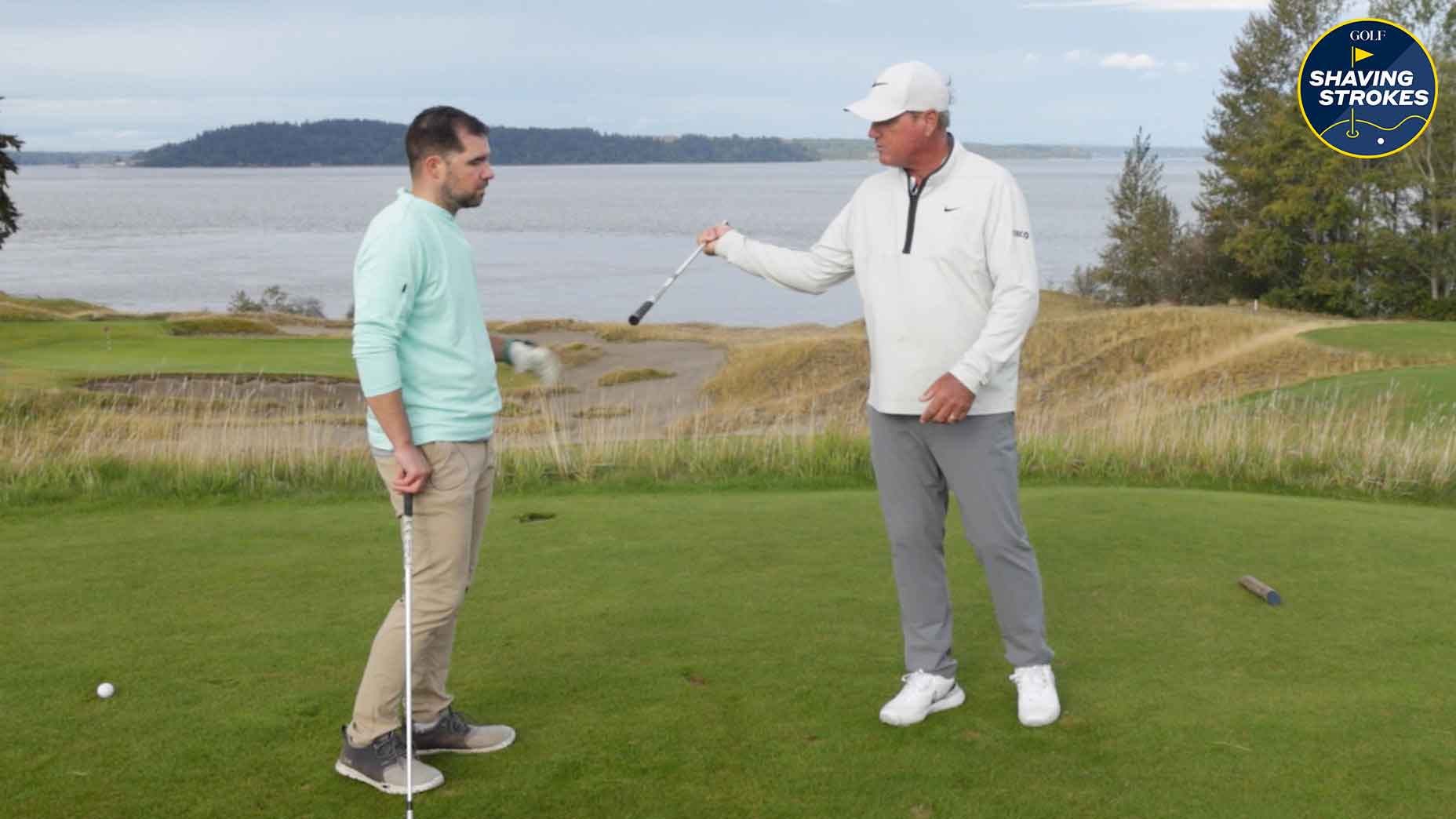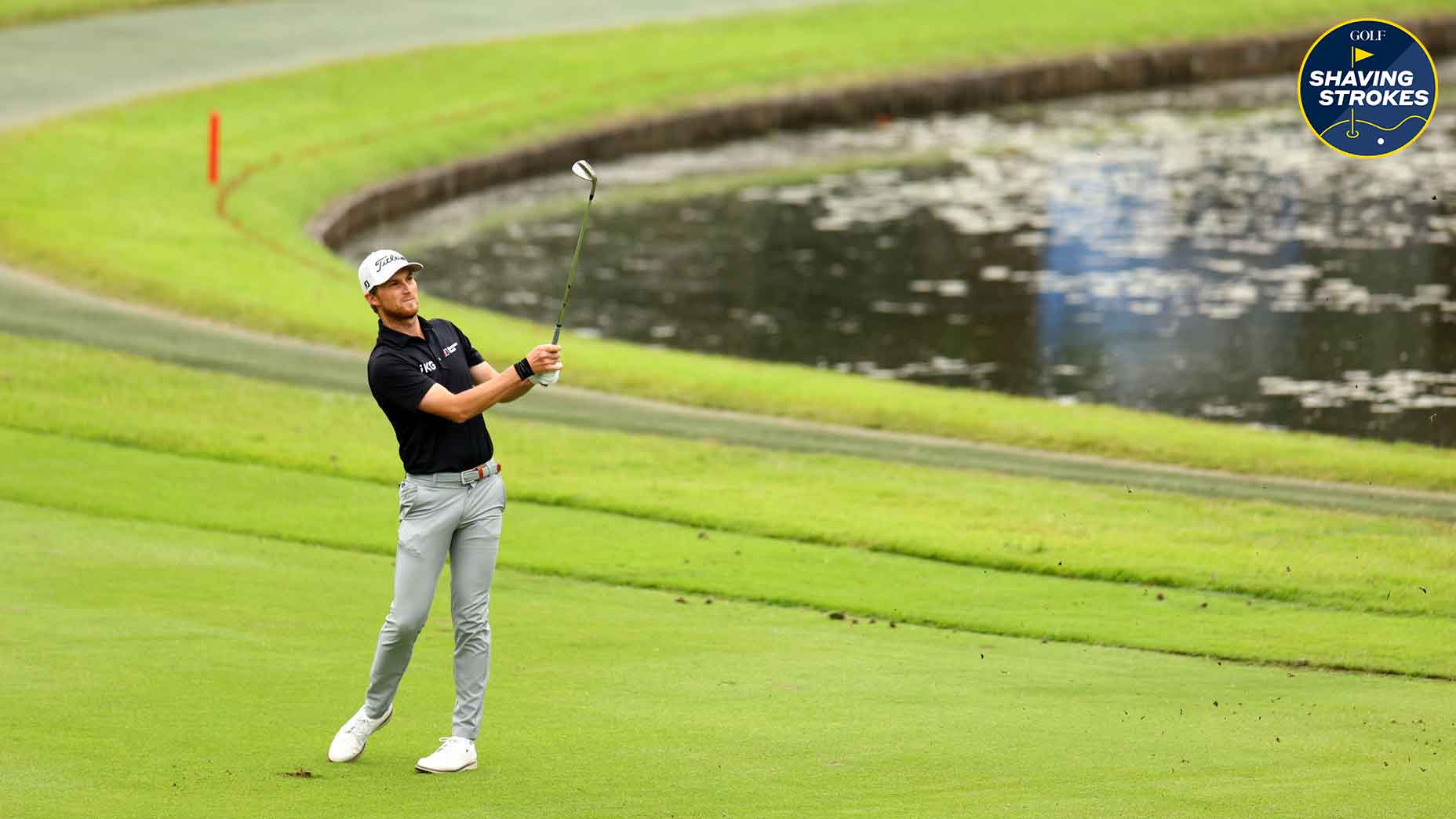This college player went from a 1.9 index to a +4 by making these changes
- Share on Facebook
- Share on Twitter
- Share by Email
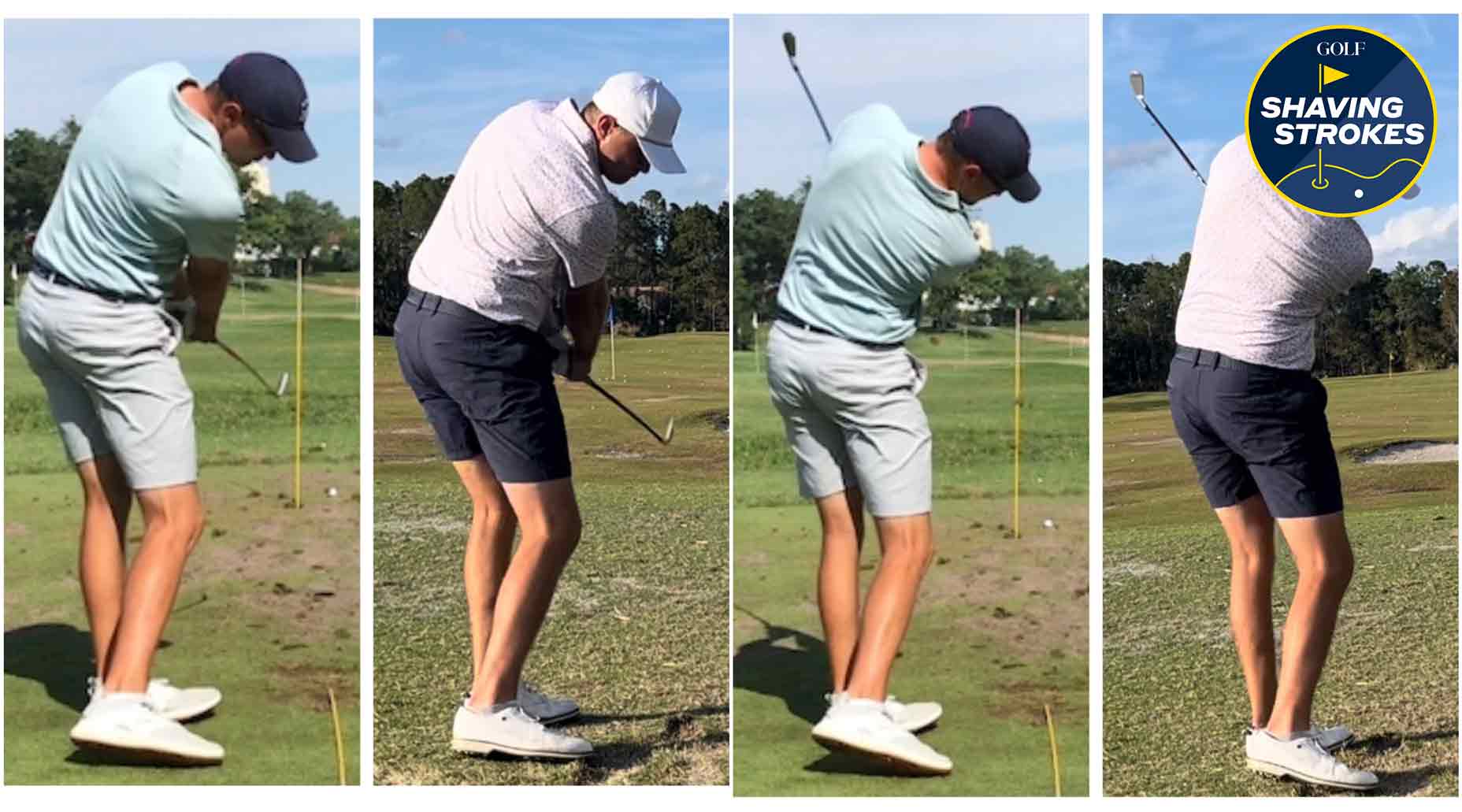
Making a swing change is hard, but this college player made huge gains by trusting the process.
Images via E.A. Tischler
Welcome to Shaving Strokes, a GOLF.com series in which we’re sharing improvements, learnings and takeaways from amateur golfers just like you — including some of the speed bumps and challenges they faced along the way.
As someone who recently went through a complete swing change, I can tell you how difficult a full overhaul can be.
Not only is it a grind to implement new techniques and concepts, but it’s even harder to ditch the poor habits that led to the change in the first place. It requires patience and an understanding that results will come — just not immediately.
While I redid my golf swing to help give me better fundamentals on my way toward breaking 80 for the first time, a college golfer named Cam underwent a reboot in order to shave nearly six strokes off his handicap — moving from a 1.9 to a +4.
A top college golf coach reveals how aspiring players can get noticedBy: Jessica Marksbury
In Cam’s situation, he was already a scratch golfer, so he didn’t need a refresh on many fundamentals. Instead, he was looking for a couple of upgrades that could shave some strokes off his scorecard and move him up the leaderboard during college tournaments.
Working with GOLF Top 100 Teacher E.A. Tischler, Cam’s intention was right in front of him — he just needed to prove he could make the changes. By following Tischler’s guidance, Cam was able to accomplish his goal — and the top teacher highlights the steps it took for the player to get there.
The changes that helped Cam shave six strokes
During the first lesson with my students, I ask a series of questions designed to understand their athletic history and golf experience. Cam’s athletic background was diverse, and it was clear to me that he was really athletic.
Mostly focusing on baseball in high school, Cam told me that much of his golf development came from his sheer athleticism, and that he relied mostly on random swing tips from the Internet to hone his skills.
While he was willing to put forth the effort to improve his game, he wasn’t seeing the improvement he expected, telling me: “All the instruction, both on the internet and in person, has followed trendy techniques and failed to produce any results. Because of that, I haven’t been very competitive my first couple of years of college golf.”
Cam continued to explain that, because of the lack of success and continued disappointments, his confidence was low. He believed that he had the athleticism and talent to play at a high level, dreaming of playing professional golf one day.
With little success and low confidence, his plan was to just graduate college, go to grad school, and get “a desk job,” as he put it.
But I wanted to see his goal become a reality.
Have a plan that you can stay committed to
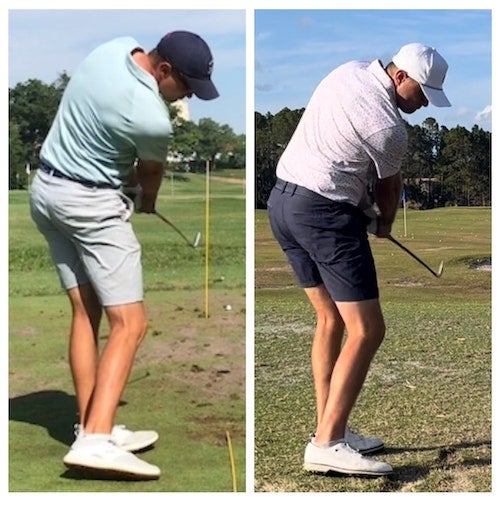
It was clear to me that Cam could see himself playing golf at a high level, at least in his dreams, and I believed that was a real possibility.
In the first lesson, we assessed Cam’s present technique, screened him to better understand how his body mechanics worked best, and created a game plan for him to reach his goals.
Cam had a very conventional-looking swing, and if you saw video or pictures of him then, you might ask why he even needed a swing change. The reason was because he could miss it 30 yards left or 40 yards right on any given shot, and that was mainly because his swing didn’t match what I call his biomechanical design.
It didn’t take long before we saw significant improvements. Cam practiced with discipline and stuck to the plan, without questioning the process, and within six months, had made huge strides.
Establish and maintain foundational basics
To set Cam up for success, we adjusted his address, posture and grip, checked his body alignment and worked on his setup. To help him set the club properly, we added some forward shaft lean, moved the ball back in his stance and made sure the clubface was aimed in his start direction.
Most people aim the clubface at the end target instead of the start direction. However, the ball starts where the clubface is facing at impact, so you’d better be good at aiming it toward the intended start direction and returning it to the intended start direction.
While these may seem basic, they’re extremely important. Most amateurs often take the basic things for granted and don’t pay enough attention to them — but it’s the smallest details that help pro-level players consistently score low.
Work on just 1-2 swing adjustments at a time
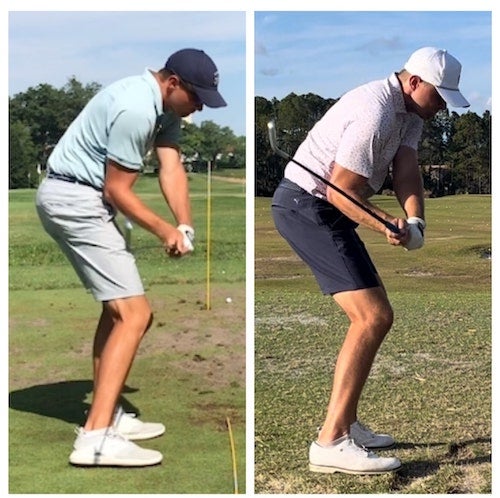
In my opinion, Cam’s willingness to work on one or two adjustments at a time helped accelerate his progress. Instead of doing what most amateurs do — which is try to change five or six things all at once — he maintained his focus on a couple of things first, mastered them and then determined other areas to improve.
By sticking to a couple changes at a time, Cam could give those things his full commitment, rather than clog his mind with too much information at once.
To help reduce his curvy (and inconsistent) shots, we worked on posturing him up and countering his early-extension. We then began to stabilize his pivot action and refine his release pattern. Those adjustments made his delivery more efficient, giving him effortless power and more control of his ball-flight.
Develop skills that fit your body mechanics
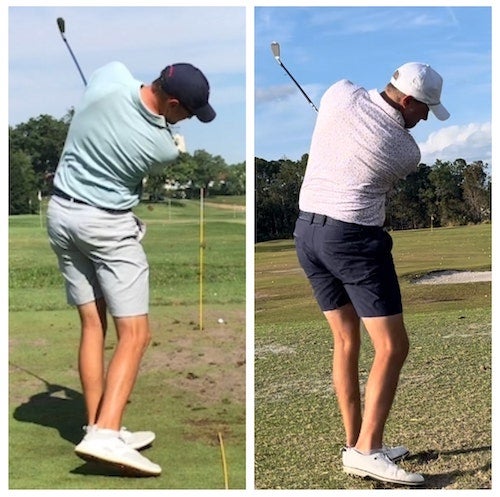
Once we sharpened Cam’s basics and made a couple minor tweaks, we focused on what specifically fit his unique body mechanics. Since we’re all built differently, it’s important to understand the swing techniques that are suited to your specific biomechanical design.
During a recent conversation with Cam, he told me that a pro player at his home course suggested something different than what he and I were working on. His response was rewarding.
“My body doesn’t fit that conventional model. I’ve tried to swing that way and it fails for me,” he said. “But finding what fits my unique body mechanics has allowed my swing to feel more effortless, helping the ball go farther.”
Making a swing change? These are 4 things you need to knowBy: Tim Cooke, Top 100 Teacher , Nick Dimengo
As mentioned earlier, Cam has natural athleticism, so it was all a matter of tapping into that and simplifying his mechanics.
For instance, when Cam first came to me, it was clear that he tilted too much during his swing. That was mainly because he fired his hips aggressively from the top of the backswing, would leave his arms behind and end up with stuck swing action. As soon as Cam was moving toward the stuck swing alignments, he’d have to tilt to try and save the swing.
By cleaning up his over-tilting, he’s improved horizontal actions and has made a huge improvement in the efficiency of his swing — helping create even more effortless power.
For reference, during a recent lesson, Cam was hitting his 9-iron consistently between 175-185 yards, and he still had more in the tank. He used to play it about 150 yards.
The results
After making the adjustments and reworking Cam’s golf swing, he experienced the success he was hoping for. His junior year of college produced solid results, and his senior year saw him win his conference championship, ultimately qualifying him for the NAIA national championship tournament.
Despite the results, Cam continues to grind.
We’re now working on finishing off his swing technique, getting him closer to completing the full, transformative process, which bodes well for his goals as a golfer.
When we began this journey together, Cam was barely a scratch golfer. He now holds a +4 index, which puts him in the position he’s always dreamt of: Preparing himself to play professionally.

Game Golf KZN GPS Shot Tracker
$219.99
View Product
Latest In Instruction

Golf.com Photographer

Nick Dimengo
Golf.com Editor


